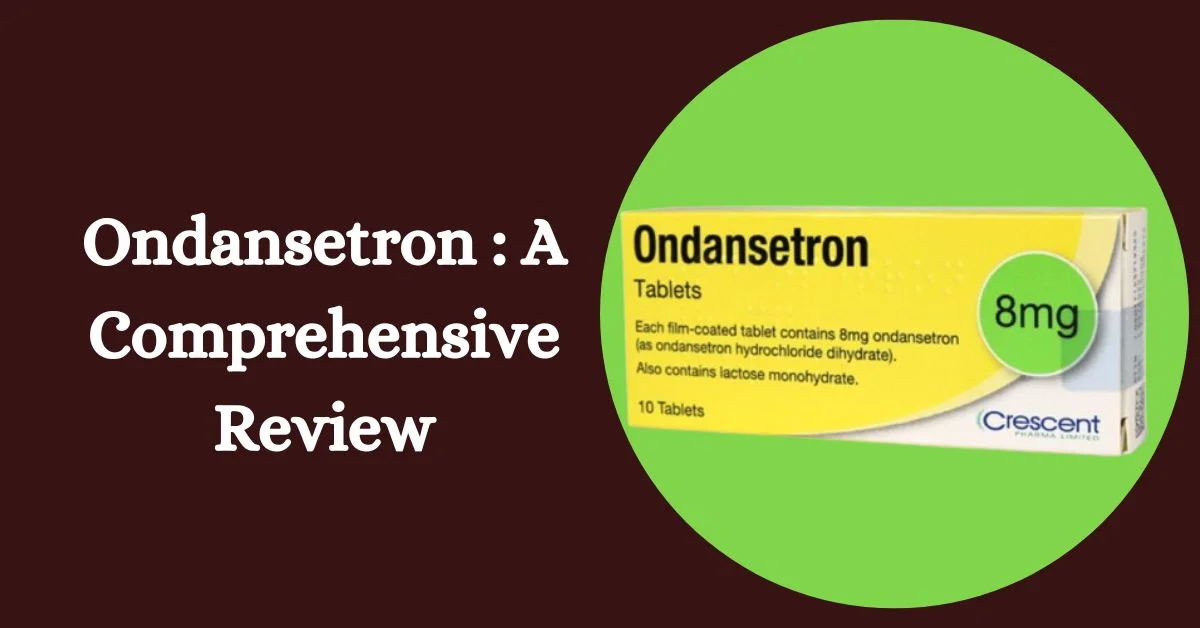Popularly known by its brand name Zofran, ondansetron is used to counteract the nausea and vomiting that often accompany chemotherapy and the stomach flu. This page seeks to provide a full overview of ondansetron, encompassing its applications, benefits, administration methods, potential side effects, considerations when taking it with other medications, and its promising future improvements.
Uses of Ondansetron:
Common uses for ondansetron include prophylaxis against postoperative, chemotherapy, and radiation-induced nausea and vomiting. Ondansetron is also frequently used to treat nausea and vomiting caused by gastroenteritis, an inflammation of the gastrointestinal tract.
This medicine is categorized as an antagonist for the serotonin 5-HT3 receptor. Ondansetron improves cancer treatment tolerance and gastrointestinal infection recovery by reducing the activity of serotonin, a neurotransmitter implicated in inducing nausea and vomiting.
Methods of Administration:
The medicine ondansetron is convenient because it can be given orally, intramuscularly, or intravenously. When taken orally, patients have the freedom to do so even when not in the hospital. On the other hand, when oral ingestion is not an option—for example, during chemotherapy sessions—intramuscular and intravenous administration may be preferred.
Since it can be given in a variety of ways, ondansetron is useful in a wide variety of clinical contexts and to a wide variety of patient types.
Benefits of Ondansetron:
Ondansetron’s advantages are not limited to its ability to quell nausea and vomiting. The fact that it helps alleviate the discomfort of these conditions is a major plus. Ondansetron improves a patient’s quality of life during and after medical procedures by eliminating the underlying triggers for nausea and vomiting.
The use of ondansetron has also been linked to shorter hospital stays and fewer supplementary drugs for symptom management. These variables enhance patient satisfaction and may even reduce healthcare expenditures, which has important monetary ramifications.
Side Effects of Ondansetron:
Although ondansetron has a high safety profile, it is important to be cautious of any unwanted effects. Constipation, headaches, and fatigue are common adverse reactions. These negative reactions typically subside as the body becomes used to the medicine. However, those who experience severe or ongoing adverse effects should consult a doctor.
It is vital for individuals to inform their healthcare professionals about any pre-existing diseases or medications they are taking, as this information can influence the likelihood and severity of adverse effects.
Considerations when Taking Ondansetron with Other Medications:
Ondansetron is not something to be used without first discussing it with a medical professional. This is especially crucial if the patient is already on multiple drugs. Ondansetron’s compatibility with various medicines makes it a versatile option, but vigilance is still necessary.
In the event of a negative interaction, doctors can change dosing or suggest an other treatment option. Furthermore, patients should report any changes to their drug regimen, such as the start or stop of ondansetron, to facilitate holistic and integrated care.
Pregnancy and Safety:
Ondansetron is significant because it is safe for usage during pregnancy. Nausea and vomiting during pregnancy, frequently referred to as morning sickness, can dramatically influence a woman’s quality of life. The anti-nausea drug ondansetron has been demonstrated to be safe and effective in pregnant women, easing these symptoms without endangering the unborn child.
Pregnant women should see their healthcare professionals before beginning therapy with any drug to explore the risks and benefits associated with the medicine in their individual circumstances. The decision will be based on the specifics of each case, including the mother’s and the baby’s health status at the time.
Pharmacokinetics and Dosage:
Between three and six hours is the half-life of ondansetron. This attribute provides for flexibility in dose, with possibilities for daily administration or modifications based on the unique needs of the patient and the specified treatment plan.
Dosage recommendations are context-specific and may change based on variables such patient age, intensity of symptoms, and route of delivery. Each patient’s optimal dosage will be determined by their healthcare practitioner after taking into account their specific needs.
Future Developments and Promising Outlook:
Ongoing research and development into ondansetron aims to increase its efficacy and broaden the range of conditions for which it can be used. New formulations and delivery techniques may be investigated to improve patient outcomes as our knowledge of the mechanisms driving nausea and vomiting grows.
Ondansetron is already an invaluable tool for the management of nausea and vomiting in a wide variety of medical contexts, and ongoing clinical trials and research investigations may find further benefits and applications for the drug.
Conclusion:
Ondansetron, sold under the brand name Zofran, has been shown to be an effective treatment for preventing nausea and vomiting due to chemotherapy and the flu. The reduction in pain, medication, and hospital stays are only some of the additional benefits. Ondansetron has a favorable safety profile despite the fact that it may cause certain unwanted side effects.
Patients should be completely honest with their doctors about their medical history, current medications, and any worries they have before starting any new treatment. Ondansetron’s future looks bright, promising further advances in antiemetic therapy as research and development continue.











